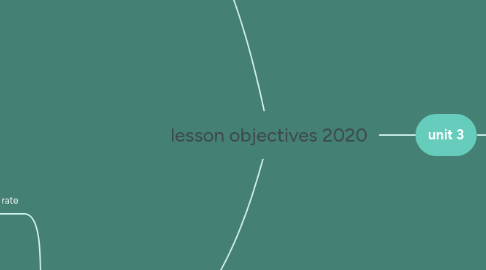
1. unit 3
1.1. concept 3.1: ion formation
1.1.1. cations are positively charged, anions are negatively charged.
1.1.2. ions are formed when atoms gain or lose electrons. monatomic ions are those single atoms that result from it.
1.1.3. the formation of ions relates to the octet rule, because as atoms lose or gain electrons they satisfy the rule.
1.2. concept 3.2-3.3: covalent/ionic bonding:
1.2.1. an ionic compound is charged together as well held by the attractive force of opposite charged ions, cations & anions.
1.2.2. binary compounds are formed by the merge of cation and anion it also includes of only two elements.
1.2.3. Ammonium chloride is an example of compounds with polyatomic ions. It needs two polyatomic ammonium ions to pass their valence electron to the two chlorine atoms.
1.2.4. Electronegativity can measure an atom's attraction to electrons within a chemical bond. If the electronegativity difference between two atoms is 1.7 or greater, the atoms will form an ionic bond.
1.2.5. the formation of covalent bonds relate to the octet rule since atoms are sharing their electrons to satisfy the rule.
1.3. concept 3.5: chemical formulas
1.3.1. An ionic compound's chemical formula is composed of two pieces, a chemical symbol and a subscript that follows the chemical symbol of each ion.
1.3.2. The formulas for molecular compounds consist, like the formulas for ionic compounds, of chemical symbols and subscripts. It provides a description of a molecule, such as the number of atoms contained in one compound molecule, for each element.
2. unit 4
2.1. concept 4.1: chemical reactions and equations
2.1.1. Chemical reaction is the interaction of molecules causing chemical change to transform the original substance. chemical equation is a mathematical description of a natural process; includes chemical formulas and coefficients
2.1.1.1. Mole is a type of unit that is useful to determine the weight of a molecule in chemical equations.
2.1.2. chemical reactions can be described by many different equations to represent compounds. when balancing an equation, coefficients are placed before chemical formulas.
2.2. concept 4.2: mathematics of formulas and equations
2.2.1. significant figures rule: non zeros are always significant, zeros between two significant digits and any trailing zeros in decimal are as well.
2.2.2. Numbers of atoms or molecules can be converted into moles using the number given by Avogadro. Using molar mass, Moles can be converted to grams.
2.2.3. Molar mass cannot be directly measured, but is calculated using atomic mass using g/mol.
2.2.4. percent composition is calculated by mass of element/mass of compound and then multiplied by 100.
3. unit 5
3.1. concept 5.5: reaction rate
3.1.1. chemical reaction is a chemical change that converts a new substance while reaction rate is the rate or speed at which chemical reactions occur. formula for reaction rate = Δ[C]/Δt. you can also observe the chemical change .
3.1.2. surface area, pressure, temperature, and catalyst affect reaction rate
3.1.3. reactants must always collide for the reaction to occur. any factors that increase the number of collisions can increase the reaction rate. for example surface area will smaller particles.
3.2. concept 5.4: chemical equilibrium
3.2.1. if there is no net charge in a reaction then it loses electrons and becomes positively charged.
3.2.1.1. equilibrium constant is important for scientists because it allows them to know if a chemical reaction favors products or reactants
3.2.2. C(s)+2H2(g)⇄CH4(g) is an expression with solids and liquids.Both the forward and the reverse reaction occur at equilibrium, however the level of each reactant and product formed remains constant.
3.2.3. aA+bB→cC+dD
3.2.4. Rising the temperature adds energy to the system, shifting this reaction 's equilibrium in the endothermic direction for more product. Pressure can also affect a equilibrium, involving gases. If an equilibrium reaction undergoes an increase in pressure or a decrease in volume, it shifts toward the direction that holds less moles of gas.

